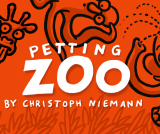
They ranged from the presentations on unusual creative projects whose practical applications were unclear, to very inspiring pieces of information that motivated me to better myself in my field, and perhaps take some risks in unknown territories.
My main take-outs are as follows:
The integration of culture and design
My academic knowledge about design is limited. I have worked in advertising for some years now, but I have always felt that my understanding of the creative applications of strategy could expand.
I realise now that design is the manifestation of some universal principles. It is the outcome of a process of amalgamation of the mentioned truths in a context, being the environment, culture or the brand.
My main take-out from the conference this year was the fact that design does not, and should not live in isolation from human beings’ lives. It is an obvious realisation, however difficult to apply to every single task and piece of creative work.
For instance, in order for the UK’s Government website to serve a practical purpose, the users’ needs were put in front of the possible interests of each Ministry and division. The outcome is a single website (in process) that includes all of the Ministries’ digital properties. Each of the elements used in it responds to a user’s need and not to a random spark of inspiration. The result is an overarching Digital Strategy that has been emulated by different Government sites throughout the world.
Creative leadership
The second highlight of this year’s Design Indaba was the talk by John Maeda, president of the Rhode Island School of Design.
Maeda explained how leadership is undergoing a paradigm shift at the moment. The reasons behind this include the emergence of start-up businesses and a new mentality in managing organisations.
While traditional leadership fits into a pyramidal structure in which the leader is at the top of the organisation and the workers are at the bottom, a creative leadership structure resembles that of a tree. In this model, the leader is the trunk of the business, and the people who produce and manufacture the product(s) are on top. Finally, the management team is at the bottom acting as the roots of the structure.
The above allows for more flexibility and creativity, according to Maeda. The idea behind this model is that each group of people act as an independent organism that is part of a central one.
The start-up is the perfect example of this type of mentality although, Maeda warns, creative leadership is a healthy blend of traditional leadership and a start-up mindset.
While new small businesses are more flexible and move faster, traditional businesses are more stable and have processes in place. A combination of the two is needed for successful and creative leadership.
Design that impacts the environment is innovative
The last theme I identified refers to design that is innovative and at the same time changes the environment and the context in which it takes place.
Alex Atala, the best chef in South America, talked about the way in which traditional ingredients can be used in order to produce creative dishes that minimise food waste.
This was, without a doubt, a different talk that left me thinking about the way in which we consume food, and how design can help the environment become a better place.
For me Atala encapsulated what the conference was about: Design that lives in people’s lives by incorporating culture, conserving the environment and putting the user first.
I leave you with some of Atala’s points:
- Innovation does not mean creating something new but being able to integrate traditional knowledge into our current context
- If we ate everything that our environment has to offer we could avoid food waste. A good example are insects, which are some of the key ingredients he uses
- Our environment and culture usually provide us with the answers to cleverer and more innovative design.












